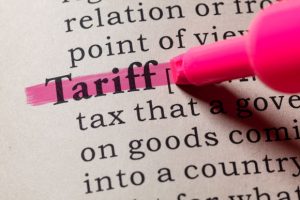Russia announces plan for metals tariffs
The metals markets received a jolt late last week with the news that Russia is considering applying export tariffs to steel, aluminium, copper, nickel and ferro alloys from this August through to at least the end of the year in order to ease metal supply and prices for domestic consumers.
Each month, MetalMiner hosts a webinar on a specific metals topic. Explore the upcoming webinars and sign up for each on the MetalMiner Events page.
Russia metals tariffs to cover copper, aluminum, nickel and others
According to Bloomberg, the plans include a base duty rate across all products covered by the duties of 15%. However, it includes a specific minimum tariff for each metal, varying from $1,226 a ton for copper, $2,321 for nickel and $254 for primary aluminum. In addition, each steel grade would incur its own rate, starting with HRC at $115 per ton.
As Bloomberg states, the taxes could have far-reaching implications for global metals markets.
That is particularly true at a time of tight supply for products such as aluminum.
Rusal controls about 10% of the global aluminium sector. Meanwhile, Norilsk Nickel produces about 20% of the world’s nickel. Russia is the third-biggest steel exporter, with most sales going to Europe.
Just under 10% of the European market is serviced by primary aluminum imports from Russia. Europe is not alone, either. The U.S. and consumers in the Far East all receive primary aluminum supplies. Therefore, the tariff will have an impact on physical delivery premiums in the U.S., Europe and Japan.
Steel billet and slab suppliers are already rubbing their hands in glee at the prospect of a further boost to prices if the market tightens further. Meanwhile, consumers from Turkey to the Philippines are worrying prices will rise further and deliveries extend in what is already a constrained market.
Tariffs could extend high-price run
Russia is expecting the new taxes to bring in about $2.5 billion over the initial six-month time frame.
But quite how or if it proposes to use those funds for the benefit of hard-pressed domestic consumers remains to be seen.
Ostensibly, the taxes are said to compensate consumers for rapid rises in commodity prices of between 60% and 100% over the last 12 months. It may equally be motivated by officials seeing the windfall primary metal producers are earning on exports. Seeing that, they may have wanted the state to get in on some of that.
There is no firm decision yet. Metal processors and consumers will be anxiously waiting for clarification. Many were hoping the currently elevated markets would cool as the year moved into the second half.
Russia’s proposed move could well postpone that into 2022.
The MetalMiner Best Practice Library offers a wealth of knowledge and tips to help buyers stay on top of metals markets and buying strategies.



Leave a Reply